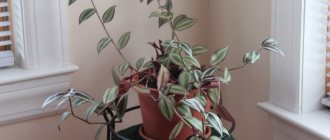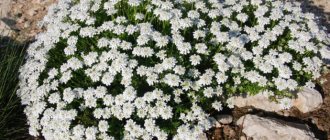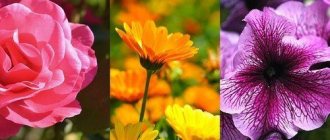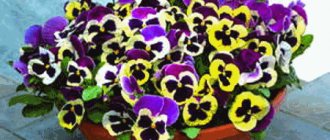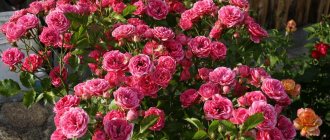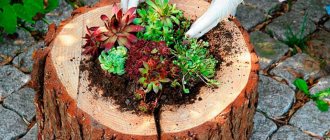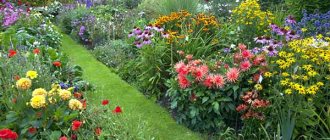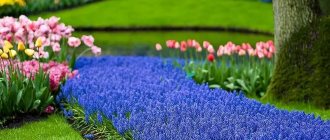Planting flowers in a flower bed is a real challenge for lazy gardeners. To create a beautiful flowerbed, you need to work hard. And you will be able to relax, admiring the results of your work, only after 2 years of work.
Plants such as galanthus, crocus, pushkinia, maskaria do not require careful care.
Start with a hedge: plant viburnum and rowan there. These are unpretentious shrubs, but they will delight you with their beauty all summer long. You can plant lilacs in a sunny place, which also does not require much effort, and will bloom in May. Honeysuckle grows in the shady side and pleases not only with beautiful flowering, but also with a good harvest.
Creating an unpretentious flower paradise
Experts in placing low-demanding flowering plants indicate that there are several options for their planting and design, for example:
Bright flowering carpet. From simple, but bright and attractive bushes you can easily create a lawn-type flower garden. For a colorful carpet, wildflower collections are suitable, as well as colorful poppies, delicate cornflowers, everyone’s favorite daisies, etc.
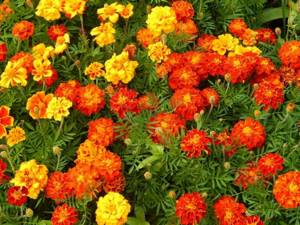
This type of carpet rarely requires watering or constant trimming. And for those around you, it will become a real natural masterpiece, combining a variety of colors, a unique aroma and the magic of simplicity.
A colorful arch or gazebo. For decorating such structures, unpretentious flowering bushes such as vines are best suited, in particular, multi-colored clematis, virgin grapes, climbing roses or many climbing annuals, such as decorative beans, morning glory or peas. These and other plants will turn an ordinary gazebo or arch into a real royal garden attribute and give those around you a great mood.
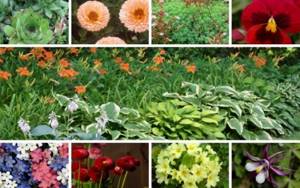
A textbook flowering flowerbed. In order to create a classic, but fresh and unique flower bed, gardeners recommend combining annuals and perennials. For example, complement the well-known and beloved irises with equally popular Turkish carnations, asters and exciting pansies. Watering in dry weather or removing dry inflorescences will not take much time.
By successfully selecting and combining plants, you can get a beautiful carpet, arch or flowerbed that practically does not need to be taken care of.
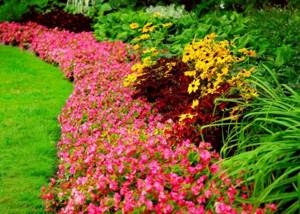
Doronicum
After most of the bulbous plants have faded, Doronicum begins to bloom. This flower decorates any flowerbed, and its bright yellow daisies by their very appearance make the mood joyful and sunny even on the cloudiest day.
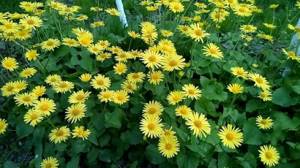
Due to the fact that Doronicum does not need constant sunlight, it can grow among low bushes or in the shade of a country house.
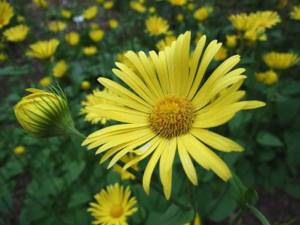
Spring low-demanding perennials
Easy-to-care spring flowers that bloom for a long time are suitable for beginning gardeners. They often think that creating and maintaining a flower bed is a difficult and troublesome task.
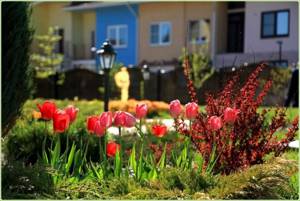
Among the most unpretentious, but nevertheless beautifully flowering plants, you should pay attention to the following bulbous plants:
- daffodils. For most lovers of fresh early flowers, daffodils play the role of a symbol of the arrival of spring. White and yellow daffodils are found in gardens immediately after the snow melts. Unpretentiousness to living conditions is known to all flower growers, therefore these perennial flowers are widely used in many flower beds;
- crocuses. Delicate, long-flowering perennials of the Iris family. Crocus bushes do not require annual digging, and also adapt to new planting sites without problems;
- Muscarica. Small-bulbous plants of the Hyacinth family do not require any attention at all. Plump blue and blue flower stalks form beautiful miniature beds on the bare and black spring soil;
- tulips. Not all bulbous plants can be called unpretentious, but spring tulips are one of them. Bright buds of plants - simple, terry, plain, multi-colored - are among the first to decorate garden beds after winter.
You should definitely add cheerful periwinkle and delicate lilies of the valley to your collection of unpretentious blooming flowers. The latter get along well in both sun and partial shade. They do not need to be replanted - they feel great in one place for 10-15 years.
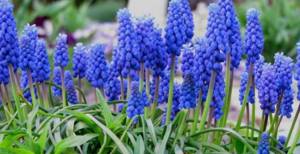
Unpretentious annuals
Annual flowers are loved by many gardeners. They are valued for their variety of colors, varieties and types, their ability to decorate any flowerbed, and their long flowering period. Such plants do not require preliminary cultivation of seedlings: it is enough to simply sow the seeds in open ground.
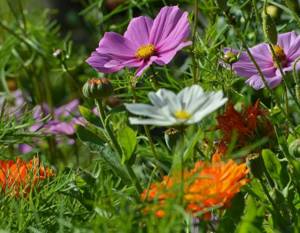
In addition, they won’t get boring in one season, and next year they can be replaced with new species or the flowerbed can be placed in another part of the garden.
Summer perennials that are happy with little care
A garden or cottage requires special attention in the summer, so flowering unpretentious plants become a boon for a busy summer resident, as well as a decoration for the area. Which summer most unpretentious perennial flowers are popular among lovers of beautiful plants:
- garden geranium. A fragile but very attractive plant that produces flowers all summer days. And upon completion of flowering, the patterned foliage is painted in a bright palette of colors - from red to yellow;
- hollyhock (mallow). Favorite flower of older people. Mallow is truly a giant among flowers - up to 3 m in height, although it all depends on the chosen plant variety;
- daylilies. Popular and hardy, daylily bushes generally thrive in all conditions. Daylilies are vigorous plants that have great vitality and do not require much attention;
- peonies. Flowers are considered a symbol of prosperity and prosperity. Luxurious inflorescences attract everyone's attention. Peony bushes grow almost on their own, only need fertilizer once a year, and in dry summers they should be watered;
- delphinium. The tall flower stalks of delphiniums always cause the admiration of others. Flowering lasts a long time, while their care is minimal;
- astilbe. It is considered one of the longest flowering plants. It is recommended to plant it in the center of the flower bed or make a bright monobed from one astilbe. Blooms from mid-summer until almost the first frost;
- irises. Among gardeners who have little time to care for the garden, large, bright inflorescences of irises take first place in popularity;
- oriental garden poppy. An extremely picturesque flower, often used in landscape gardening, flower beds and to decorate borders;
- Turkish cloves. The plant spreads by self-sowing and has deservedly become one of the most unassuming, but attractive, garden crops.
You should also take a closer look at garden bells, brunnera, doronicum, lupine and evening primrose.
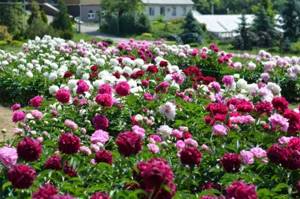
Forget-me-not
Forget-me-not is a plant familiar to everyone. Under natural conditions, its small pale blue flowers can often be found in meadows or on the edges of forests. Unlike the forest forget-me-not, the color of the garden hybrid can be white, pink, purple or cream, and in total, breeders have bred about 50 varieties of this flower.
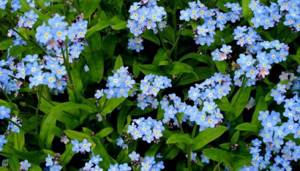
When choosing a place in the garden for forget-me-nots, it is worth remembering that it does not need abundant sunlight and grows well in shade or partial shade, delighting with its flowering for 2 months without interruption.
Unassuming, but no less beautiful autumn perennials
For a number of gardeners, it is important that the area of the site is attractive and blooming even in the cool autumn time. For this purpose, you should take care and plant unpretentious flowers for the garden, which reveal their beauty in the last week of August or in the first days of September, when there are still sunny days and relatively warm nights.
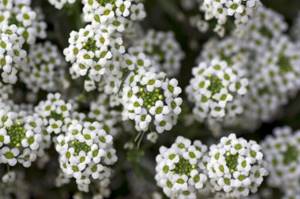
Ground cover (creeping) perennials blooming all summer: types, names, photos, description. TOP 10 best options for a summer residence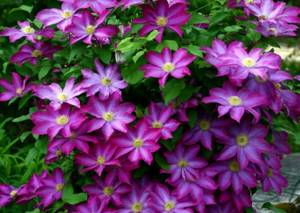
Clematis flowers - 70 photos of a beautiful flower. Planting, growing and care in open ground
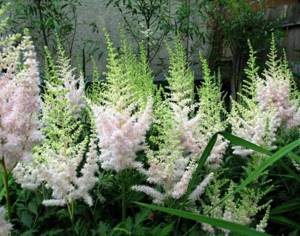
Astilbe: planting, care. growing from seeds, photos, description of species
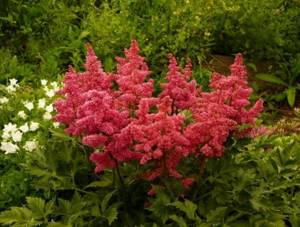
Autumn flowers for the garden are not as diverse as spring and summer flowers, but they are still enough to decorate any area. Among perennials, phlox, gladioli, autumn chrysanthemums and variegated asters are very popular. Hairy rudbeckia looks good in the garden with yellow-orange inflorescences similar to chamomile flowers.
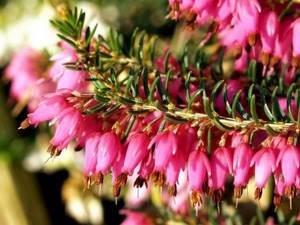
Rudbeckia does not lose its attractiveness until frost, and also does not require special care. Another beautiful autumn flowers are marigolds (tagetis). The inflorescences are found in yellow, orange and brownish, reflecting the entire palette of options and shades.
Every flower lover can organize a beautiful front garden on their property, even if they have very little time to deal with plants. The variety of unpretentious country flowers is so great that there can be no clear recommendations for organizing flower beds. It all depends on individual taste, love and care for flowers, and they will help turn the site into a beautiful and bright fairy tale.
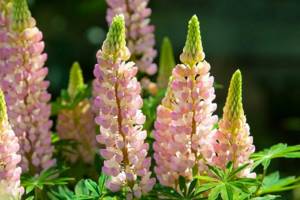
Unpretentious flowers for the cottage and garden
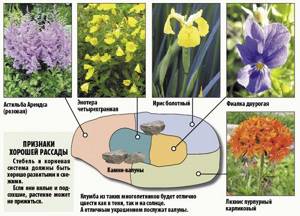
There are many hardy types of flowers, these include:
- Shade-loving plants, spring and autumn bulbous. These are tulips, lilies of the valley, snowdrops, erythroniums, etc. You can safely plant them in the shady side; they will delight you with their flowering for many years. In addition to bulbous flowers, there are other plants that prefer low-sunny places. This is fern, pachysandra, tenacious, etc.
- Solar plants. Sun-loving, unpretentious flowers include: lilies, peonies, phlox, mallows, bells and rabatki. Shrub aster and carnation can be planted on the sides of the flower bed.
- Unpretentious peers. The most common flower from this group is petunia. The only thing you need to do is purchase seedlings and plant them in the soil. Petunia blooms from spring until the first cold days appear. Other plants that do not require special care include calendula, nasturtium, marigolds, and annual aster.
Ground cover perennials
In the garden, ground cover plants are used when you need to fill the empty space between tall or medium-sized plants. They grow or spread along the ground. Moreover, almost all of those presented love shade and bloom profusely in the absence of bright sunlight.
A tenacious creeping creature. This unpretentious ground cover plant with decorative leaves grows up to 15 cm and delights with color in May-June. Some varieties also have attractive flowers (usually white or pink) on short stalks. The shades of this ground cover plant come in white, blue, light blue and pink. Blooms in May - June.

Jeffersonia is dubious. Forms a beautiful carpet of decorative leaves. Blooms briefly in May.
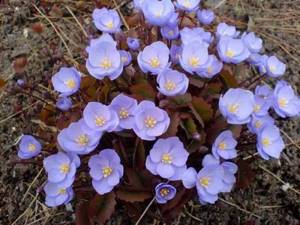
May lily of the valley. Another beautifully flowering perennial, but this period falls in May, and has a stunning aroma. Graceful bells on arched drooping peduncles will perfectly decorate all shady corners of the garden. It quickly spreads across the soil - this is the disadvantage of this unpretentious perennial. Lilies of the valley are propagated by division. Flower rhizomes are planted in the ground immediately after division.
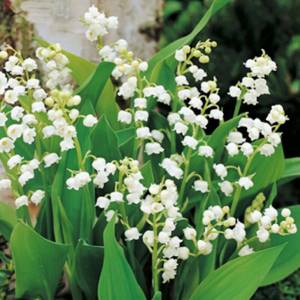
Periwinkle. These are already long-flowering perennials that will delight you from May to September. Periwinkle is similar to phlox and these ground cover plants bloom all summer. But the plant does not like shade. Here it will grow well, but bloom little.
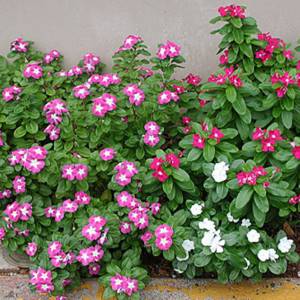
Bulbous perennials
They decorate empty flower beds in spring. Therefore, they are especially valuable for everyone who has a summer house. Those of them that can easily survive the winter in open ground are indicated in the list.
Lilies. These delightful perennial garden flowers will decorate any suburban area. There are different types of lilies, but hybrids that appeared in the 20th century are distinguished by larger flowers and better disease resistance. Most lilies grow up to 1 - 1.5 meters in height. There are also dwarf varieties. Tall varieties of lilies are tied up, faded flowers are removed. In autumn, the stems are cut off at the root and the soil over the bulbs is mulched with peat or leaf humus. Flowering time depends on the plant group and usually occurs in mid-summer.
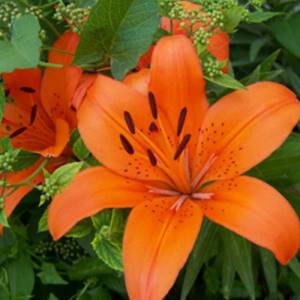
Tulips. These perennial bulbous flowers are favorites in any garden plot. The variety of colors and types is pleasing to the eye. They need to have well-lit flower beds in a prominent place so that these magnificent flowers can be admired by everyone. They look very good in group plantings. Flowering time is spring (April, May).
Daffodils and hyacinths. These spring-blooming flowers, like tulips, are planted in the fall, starting in late August. They delight with their flowering in April - May and bloom earlier than tulips.
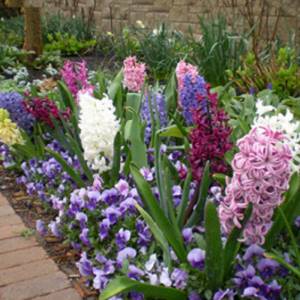
Crocuses and snowdrops. They are classified as primroses and are capable of blooming in the garden as soon as the snow melts.
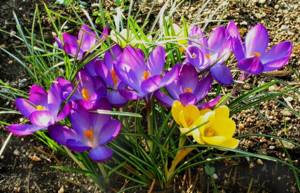
Beautiful summer unpretentious flowers for “lazy” summer residents
Bright annuals, sown or planted with seedlings in the spring, will certainly decorate any flower garden, and in the vegetable garden they will bloom the space between the beds. But in the fall their short life ends. Various types of perennials that bloom at different times will significantly save time and physical costs. Among them are many summer varieties that are beautiful and easy to care for.
Related article:
Gazania: a beautiful flower
Aquilegia or catchment (Aquilegia)
Watersheds are plants that are not too demanding on soil composition and lighting. You can plant them near bodies of water, between tall shrubs and deciduous perennials - during flowering they will add lightness and airiness to the landscape. The height, depending on the variety, reaches 50-80 cm.
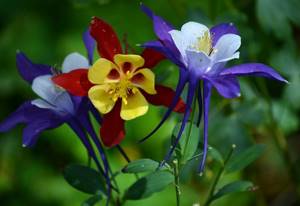
The spreading, lush bush consists of basal lacy leaves forming a beautiful rosette, and flowering stems growing from the center of the rosette in late May and early summer. The rosette leaves are openwork, carved, bluish-green, sit on long petioles, and remain attractive until autumn. The stem leaf is sessile, trifoliate.
On one peduncle, 8-12 single or collected in a loose panicle flowers of regular shape and varied colors are formed. Flowering lasts about a month. It propagates by seed, by dividing the bush, and can propagate by self-sowing.
Loosestrife (Lusimachia)
Among the varieties of loosestrife there are plants with erect and creeping stems, so you can choose tall and low flowers for alpine hills, flower beds, and row spacing in the vegetable garden. They are unpretentious in care, but each variety has its own requirements for soil and lighting. For example, the common loosestrife loves shady places and moist soils, and the lily of the valley prefers sunny areas with nutritious soil.
Related article:
Proper planting of clematis
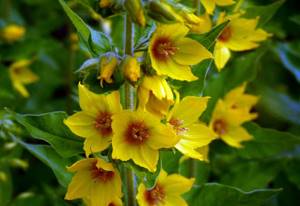
The common loosestrife has a straight stem, the flowers are bright yellow and completely cover it, and the coin loosestrife is a groundcover - the stems rise above the ground by only 5 cm. A carpet of coin loosestrife looks very impressive - against the green background of foliage, small yellow flowers shine like stars.
Oregano (Origanum vulgare)
This type of oregano is better known as aromatic and is used in cooking as a spice. But if you plant it on a mixborder in a natural style, on a medicinal decorative bed, between deciduous perennials, then it will become an excellent addition to the decor of the site. An unpretentious honey plant in a garden or country house will attract pollinating insects and create attractive areas of wild nature among cultivated plants.
Related article:
How much does beauty cost: 7 most expensive flowers in the world
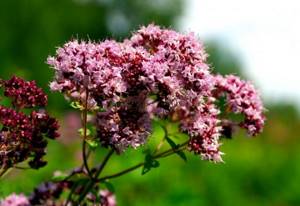
Low ornamental varieties of oregano: Acorn Bank Aureum, Aureum Crispum, Compactum, Golden Chine.
Monarda
Fragrant monarda will not only decorate sunny areas of the garden, protected from draft winds, but will also become a source of medicinal raw materials used in the treatment of respiratory diseases. When planting, you need to take into account that a flower can grow in one place for up to 10 years. It is planted in groups, in compositions with other varieties of monarda, lemon balm, hyssop, mint, and ornamental cereal grasses.
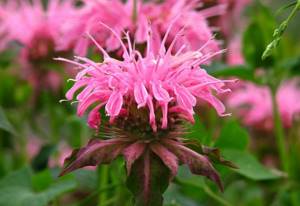
The shoots are erect, height (up to 150 cm) directly depends on the variety and growing conditions. The leaf is narrow, long, with a pleasant aroma of bergamot. Small flowers of various colors form a dense spherical or racemose inflorescence. “Shaggy”, as if disheveled, inflorescences are located along the entire length of the stem, which gives the plant an unusual fantastic appearance.
Popular varieties of monarda: Adam, Balance, Balmy Purple, Balmy Lilac, Lilac Parade, Mahogany, Pink Lace, Shneewittchen, lemon.
